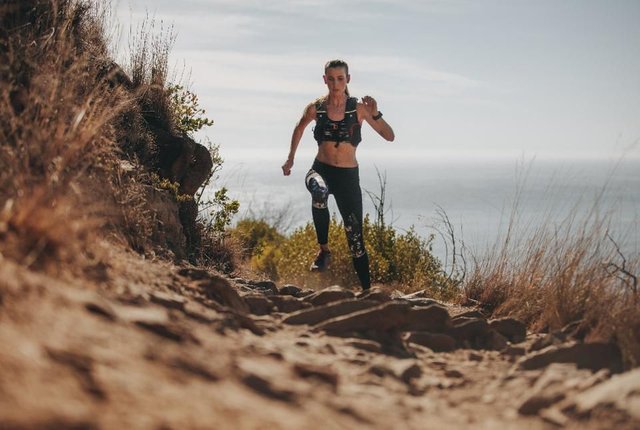It Is Time To Make Running Safer For Women And Everyone
It seems like a simple suggestion. Oh, go running to clear your mind. Get some exercise to stay in shape. Get moving to relieve some stress. But in actuality, in many locations for many people, it ain't so easy.

When you go running, you should be dodging rocks not people. (Photo: Shutterstock)
For example, in the wake of the death of Mollie Tibbetts, the 20-year old University of Iowa student who was jogging when she went missing, CNN tweeted that "a startling number of women say they have been harassed while running." This was a lead in to an article by David Williams for CNN that cited a 2016 Runner's World survey that found 43% of women and 4% of men answered "sometimes", "often", or "always" to the following question: "how often, if ever, does a stranger whistle at you, comment on your body, needlessly honk at you, or give you other similar unsolicited sexual attention?"
In this case, a startling number instead would have been "zero," not anything equal to or more than "a lot." If you are a woman or know a woman, which should be everyone unless you are a sink in a men's bathroom, you should know that catcalls, uninvited comments, and unwanted touching are frequently problems for women when they exercise. In fact, these can be problems for minority men or anyone else who seems "different," as well.
To be fair, whoever sent the CNN Tweet may have been trying to say that the number is "startling" to people who are oblivious to these problems. Or that the number is "startling" because not enough people are talking about it or doing something about it. If you don't go jogging, if you are lucky enough to not be a target, if you are wealthy enough to have your own gym to exercise, yes, you may be living in a bubble.
But such barriers to getting exercise are a real problem in our country. For example, our study published in the journal Obesity showed how crime can even lead to increases in obesity and overweight prevalence. Our combined team from the National Heart, Lung, and Blood Institute (Tiffany M. Powell‐Wiley, Joel Adu‐Brimpong, Samantha Thomas, Dana Sampson, Chaarushi Ahuja, and Joshua Rivers) and our Global Obesity Prevention Center (Michelle S. Wong, Shawn T. Brown, Daniel L. Hertenstein, Eli Zenkov, Marie C. Ferguson, and me) develop a computational simulation model of parts of Washington, DC, using our Virtual Populations for Obesity Prevention (VPOP) platform. Our study showed that reducing crime so that more physical activity locations were accessible (increasing from 10% to 50%) could help decrease the annual rise in obesity prevalence by 2.69%. Thus, it is not enough to just tell people to exercise. It has to be safe to do so.
So what can be done? Here are some possibilities:
Create safe and free places to exercise. These should be well-lit and well-patrolled by security. Free doesn't mean a gym that charges an arm and a leg to join.
Develop maps and resources so that people know where incidents are occurring and where safe places to exercise may be. These should reliable, easy to read, and regularly updated.
Offer avenues for people to lodge concerns and take these concerns seriously. Violence and damaging behavior emerge when micro-agressions are accepted or overlooked. Don't wait until people get killed to do something.
Make it clear that making people uncomfortable while they exercise is not acceptable. A jog is not a Tinder date. Someone running away from you is not playing hard to get. If you want to make a sexist or racist remark to a stranger who is exercising, go home, dunk your head in the toilet bowl, and solve your own problems. Don't release your own frustrations on innocent people.
Encourage and support exercise groups. Running groups like the New York City Road Runners can offer safety in numbers.
Exercising should be a right not a privilege. Everyone should be entitled to safe places to exercise. When you go running, you want to at least momentarily run away from stress and problems not towards them.
Source
Copying/Pasting full or partial texts without adding anything original is frowned upon by the community. Repeated copy/paste posts could be considered spam. Spam is discouraged by the community, and may result in action from the cheetah bot.
More information and tips on sharing content.
If you believe this comment is in error, please contact us in #disputes on Discord